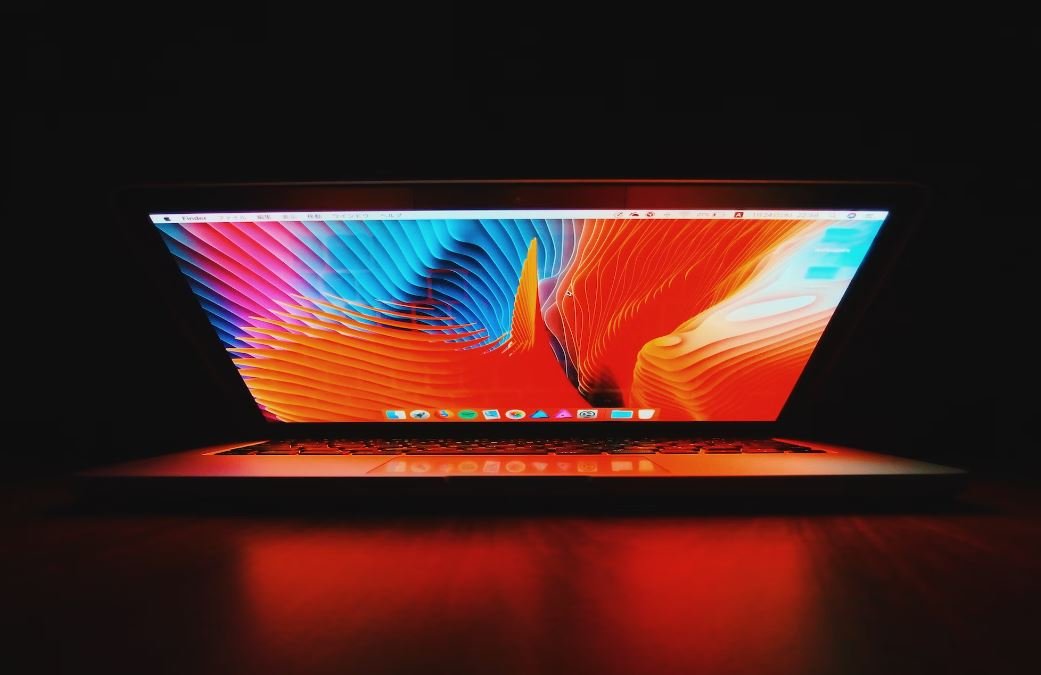Music Streaming
Music streaming is the process of transmitting audio digitally over the internet, allowing users to listen to music without having to download the files to their devices. It has revolutionized the way people consume music, providing access to a vast catalog of songs from various genres and artists.
Key Takeaways
- Music streaming allows users to listen to music without downloading the files.
- It provides access to a vast catalog of songs from different genres and artists.
- Music streaming services offer both free and premium subscription options.
- Popular music streaming platforms include Spotify, Apple Music, and Amazon Music.
**Music streaming services** offer a wide range of features that enhance the user experience. These services allow users to create personalized playlists, discover new music based on their preferences, and share their favorite songs with others. *The convenience of accessing millions of songs on-demand has led to the exponential growth of the music streaming industry.*
With the rise of music streaming, the traditional way of purchasing and owning music has drastically changed. Users no longer need to buy physical copies of albums or individual songs; they can simply stream the songs they want to listen to. This shift in consumption patterns has had a significant impact on the music industry, changing the revenue model for artists and record labels. *By adapting to this new model, artists can reach a broader audience and monetize their music through streaming platforms.*
**Music streaming platforms** offer both free and premium subscription options. Free users have access to a limited library of songs and are subjected to advertisements. Premium subscribers, on the other hand, can enjoy an ad-free experience, higher audio quality, offline listening, and exclusive content. *The premium subscription model has become the primary source of revenue for music streaming platforms.*
Music Streaming Statistics
| Statistic | Value |
|---|---|
| Number of music streaming subscribers worldwide (2021) | 517 million |
| Revenue from music streaming worldwide (2020) | $13.4 billion |
| Number of songs streamed on Spotify (2020) | 1.7 trillion |
Despite its popularity, music streaming has faced criticism regarding its impact on artist royalties and overall revenue distribution in the music industry. The revenue generated from streaming services is often divided among various entities, including record labels, publishers, songwriters, and performing artists, leading to concerns about fair compensation. Nonetheless, streaming provides a global platform for artists to reach a massive audience and gain exposure, which can lead to increased concert ticket sales and merchandise revenue.
Music Streaming vs. Physical and Digital Sales
| Physical Sales | Digital Sales | Music Streaming | |
|---|---|---|---|
| Ownership | Own physical copies of albums or songs. | Own digital copies of albums or songs. | Stream music but do not own the files. |
| Access | Limited to owned albums/songs. | Limited to purchased albums/songs. | Access to millions of songs on-demand. |
| Convenience | Requires physical media or digital downloads. | Requires digital downloads or syncing devices. | Instant access without downloading files. |
**Music streaming** continues to dominate the way people consume music, offering unmatched convenience and diversity in music selection. *With the rapid advancement of technology and internet connectivity, music streaming is likely to grow even further, shaping the future of the music industry.*
Popular Music Streaming Platforms
- Spotify
- Apple Music
- Amazon Music
- YouTube Music
Each music streaming platform offers its unique features and benefits, catering to different user preferences and needs. Users can choose the platform that aligns with their music taste, user interface preferences, and specific features like curated playlists, algorithmic recommendations, or integration with other devices and services.
Future of Music Streaming
As technology continues to evolve, the future of music streaming holds exciting possibilities. With advancements like **streaming in high-resolution audio** and **virtual reality music experiences**, users can expect an even more immersive and personalized music streaming experience. Integration with smart home devices and voice assistants will also play a significant role in shaping the future of music streaming.
In conclusion, music streaming has transformed the way people listen to music, offering a vast library of songs at their fingertips. Despite concerns regarding revenue distribution, music streaming provides opportunities for artists to reach a global audience and monetize their music. With constant advancements and new features, music streaming is poised for further growth and innovation.

Common Misconceptions
Paragraph 1: Sound Quality
One common misconception people have about music streaming is that the sound quality is always subpar compared to physical media. However, this is not entirely true.
- Streaming services now offer high-definition audio options for premium subscribers.
- Most music streaming platforms use advanced audio compression algorithms to ensure excellent sound quality, even at lower bit rates.
- The quality of your speakers or headphones can also significantly impact your listening experience.
Paragraph 2: Artist Compensation
Another prevalent misconception is that music streaming services do not adequately compensate artists for their work.
- While it is true that the revenue distribution model of streaming platforms might not favor new or independent artists, major labels negotiate better deals and ensure fairer compensation for established artists.
- Artists can earn royalties from multiple revenue streams such as live performances, merchandise sales, and licensing deals, in addition to streaming.
- Music streaming also allows artists to reach a global audience, potentially expanding their fan base and generating more revenue through increased exposure.
Paragraph 3: Limited Music Selection
Some people perceive music streaming services to have a limited music selection, primarily featuring popular mainstream music. However, this assumption does not hold true anymore.
- Modern music streaming platforms include vast libraries with millions of songs, covering a wide range of genres, languages, and musical eras.
- Streaming services provide personalized recommendations and curated playlists tailored to the user’s taste, helping discover new and diverse music.
- Independent artists and lesser-known musicians now have an equal opportunity to showcase their work on streaming platforms, increasing the variety of available content.
Paragraph 4: Mobile Data Consumption
Many people believe that streaming music consumes a significant amount of mobile data, making it an expensive option for mobile users.
- Streaming services allow users to download music for offline listening, reducing the need for continuous data usage during playback.
- Most music streaming platforms offer data-saving settings and options to control music quality, allowing users to minimize data consumption.
- Users can connect to Wi-Fi networks to stream music without consuming their mobile data, which is widely available in many public places.
Paragraph 5: Lack of Ownership
One misconception is that music streaming services do not provide a sense of ownership over the music, as users do not physically own the songs or albums they listen to.
- Music streaming platforms provide features like creating playlists, favoriting songs, and saving albums, allowing users to curate their personal collections.
- Users can access their favorite music anytime, anywhere from various devices without the need for physical storage or transferring files.
- Streaming services provide a more convenient and space-saving alternative to physical media, offering a vast library of music at the users’ fingertips.

Table Title: Music Streaming Revenue Comparison
As the popularity of music streaming grows, so does the revenue generated by this industry. This table highlights the revenue comparison between different music streaming platforms.
| Music Streaming Platform | Revenue (in billions of dollars) |
|---|---|
| Spotify | 9.85 |
| Apple Music | 6.3 |
| Amazon Music | 3.17 |
| YouTube Music | 2.2 |
| Tidal | 1.2 |
Table Title: Average Monthly Users of Music Streaming Platforms
The number of monthly users is a crucial metric for measuring the success of music streaming platforms. The following table presents the average monthly users of various popular platforms.
| Music Streaming Platform | Monthly Users (in millions) |
|---|---|
| Spotify | 320 |
| Apple Music | 60 |
| Amazon Music | 55 |
| YouTube Music | 35 |
| Tidal | 12 |
Table Title: Top Streamed Artists of All Time
The streaming era has changed the dynamics of music consumption, propelling new artists to the forefront. This table showcases the top streamed artists of all time.
| Artist | Streams (in billions) |
|---|---|
| Drake | 81 |
| Ed Sheeran | 74 |
| Post Malone | 63 |
| Ariana Grande | 56 |
| Eminem | 53 |
Table Title: Music Genre Preference Among Users
Music streaming platforms allow users to explore a vast array of genres. This table demonstrates the preference of users regarding different music genres.
| Genre | Percentage of Users |
|---|---|
| Pop | 33% |
| Hip-hop/Rap | 22% |
| Rock | 18% |
| R&B | 12% |
| Country | 6% |
Table Title: Artists with the Most Monthly Listeners
The number of monthly listeners reflects an artist’s current popularity. The following table showcases artists with the most monthly listeners.
| Artist | Monthly Listeners (in millions) |
|---|---|
| Justin Bieber | 77 |
| Bad Bunny | 73 |
| The Weeknd | 69 |
| BTS | 64 |
| Beyoncé | 62 |
Table Title: Most Streamed Songs of All Time
The most-streamed songs represent a mix of popular hits across various genres. Here are the top five most-streamed songs of all time.
| Song | Artist | Streams (in billions) |
|---|---|---|
| “Shape of You” | Ed Sheeran | 4.68 |
| “Blinding Lights” | The Weeknd | 4.12 |
| “Closer” | The Chainsmokers ft. Halsey | 3.99 |
| “Dance Monkey” | Tones and I | 3.83 |
| “Rockstar” | Post Malone ft. 21 Savage | 3.69 |
Table Title: Demographic Distribution of Music Streamers
Music streaming attracts a diverse audience. This table provides insight into the demographic distribution of music streamers.
| Age Group | Percentage of Music Streamers |
|---|---|
| 18-24 | 45% |
| 25-34 | 30% |
| 35-44 | 15% |
| 45-54 | 7% |
| 55+ | 3% |
Table Title: Music Streaming Revenue Distribution
Investigating how music streaming revenue is divided among artists and record labels can provide insights into the business dynamics. The following table displays the revenue distribution.
| Artists | Record Labels | Streaming Platforms |
|---|---|---|
| 62% | 28% | 10% |
Music streaming has revolutionized the way people consume music, allowing them to access millions of songs at their fingertips. The growth of various music streaming platforms has not only provided a convenient way for users to enjoy their favorite tunes but has also given rise to a thriving industry. Revenue generated from music streaming has skyrocketed, with platforms such as Spotify and Apple Music leading the race. The tables in this article shed light on the revenue comparison, user preferences, top artists, and songs, in addition to demographic and distribution insights. This data showcases the widespread influence and impact of music streaming in contemporary society.
Frequently Asked Questions
What is music streaming?
Music streaming is a method of playing and listening to music using an internet connection. Instead of downloading songs or albums directly onto your device, you can access a vast library of music online and listen to it in real-time.
How does music streaming work?
Music streaming works by connecting to an online music database or service, which houses a wide collection of songs. When a user selects a song, it is streamed or played directly from the server to their device in real-time, without the need for downloading.
What are the advantages of music streaming?
Some advantages of music streaming include:
- Access to a vast library of music
- No need to store large music files on your device
- Ability to discover new artists and genres
- Customizable playlists and recommendations
- Convenience of accessing music from anywhere with an internet connection
Are there any disadvantages to music streaming?
While music streaming offers many benefits, there are a few potential disadvantages:
- Dependence on internet connectivity
- Possibility of limited availability of certain tracks or albums
- Need for a paid subscription for some services to access premium features
How much data does music streaming consume?
The amount of data consumed during music streaming varies depending on the streaming quality. On average, low-quality streaming consumes about 0.5-1 megabyte per minute, while high-quality streaming can consume around 2-4 megabytes per minute.
Can I listen to music offline with music streaming?
Some music streaming services offer the option to download songs or albums for offline listening. This allows you to enjoy music even when you don’t have an internet connection. However, not all services provide this feature, so it’s important to check before subscribing.
What are the most popular music streaming platforms?
There are several popular music streaming platforms available today, including:
- Spotify
- Apple Music
- Amazon Music
- Pandora
- Google Play Music
Can I listen to music streaming for free?
Most music streaming services offer free versions supported by advertisements. However, these free versions often have limitations compared to paid subscriptions, such as restricted access to certain features or audio quality.
Is music streaming legal?
Yes, music streaming is legal as long as you use authorized platforms and respect copyright laws. Popular music streaming services obtain licenses and agreements with record labels and artists to ensure legal distribution and payment for the music being streamed.
Can I stream music on multiple devices simultaneously?
Some music streaming services allow concurrent streaming on multiple devices using the same account. However, this feature may be limited depending on the specific service and subscription plan.




